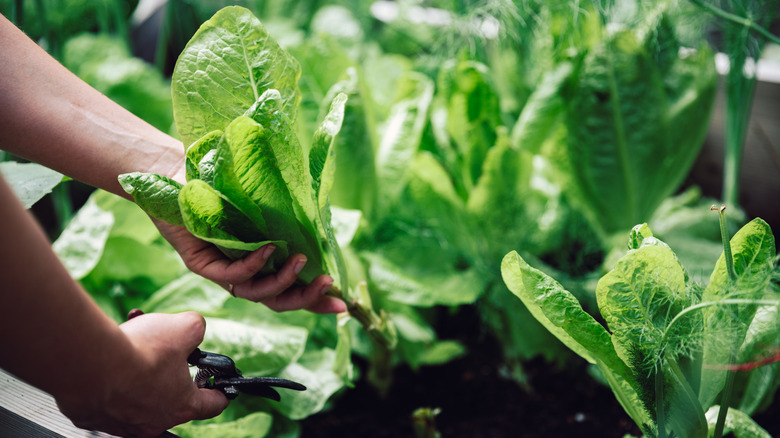We may receive a commission on purchases made from links.
You’ve just harvested those stunningly large heads of cabbage and cauliflower. As always, you’re left with a ton of leaves useful for nothing more than compost. Or are they? Before you pull out the plant to throw it on that pile of decomposing plant matter at the back of your garden, stop. Cut or pull all the leaves off and plop them into the ground. They’ll create a light-impermeable layer that will stop unwanted weed seeds from germinating and kill seedlings before they can dig those tough-to-get-out tap roots deep into your beds. It’s arguably one of the least harmful ways to kill weeds in your lawn and garden.
The chop-and-drop technique is widely used in permaculture, a style of gardening that mimics natural ecosystems to create sustainable and productive farms and gardens. Who coined the term is up for debate. It’s attributed to various leading permaculture practitioners, including regenerative farmer Ernst Götsch, systems designer Geoff Lawton, and “permie” pioneer Bill Morrison. Etymology aside, the roots of the technique extend much further back — into the ancient agricultural systems of Central America and the humus, or fertile leaf litter, of natural forest ecosystems. Originally, chop-and-drop referred to seasonally cutting back large beds or fields of cover crops to create a mulch covering the entire area. However, the technique can also be used in home gardens for weeding, pruning, and harvesting. It suppresses weed growth and pests, locks in moisture, and encourages nutrient-distributing microbial activity.
Use the right tools
Get rid of the weeds in your garden with this helpful garden tip! #gardeneducation #newgardener #homegardener #millennial #weedcontrol #weedfree #mulching #learntogrow #gardentok
♬ original sound – “Alexa! Grow Food”
Watch on TikTok
Before attempting to chop and drop that stand of Brussels sprouts or patch of lettuces, you’ll need to ensure you have the right tools. At a minimum, your own two hands will do the job well enough — after you’ve donned a pair of good-quality gardening gloves. If you want to make light work of the task, it’s better to work with a knife or pruning secateurs. Many experts in the technique suggest using a harvesting or rice knife. Garret Wade sells a French harvesting knife with a stainless steel blade and beechwood handle for $27.80. On a tight budget? Get a 6-inch stainless steel Barnel harvest knife for $3.99 on Amazon. Use a machete for chopping and dropping large crops.
There are a few ways to go about chopping (and subsequently dropping) the unwanted plants, leaves, and weeds in your garden beds. If you’re harvesting, say, a thick-stemmed cauliflower plant, cut or snap the plant off at the base of the stem. Leave the roots in the ground — they’ll break down and transfer their nutrients back into the soil. Then, holding a bundle of leaves in one hand and your cutting implement in the other, chop off the leaves and place — or “drop” — them on the ground around your other plants and seedlings. You can also tear the leaves off with your free hand. Repeat until all the leaves are removed. Add the remaining thick stems and branches to your own DIY compost.
Chop and drop best practices

If you have a roomy garden, you can leave the stem uncut, removing only the existing leaves. It will grow more leaves, cultivating an endless mulch source. If you’re chopping and dropping thin-stemmed vegetables or weeds, you can cut the stem to soil level, leaving the plant where it falls. Avoid using this technique on plants with woody stems. They take a long time and lots of nitrogen to break down and steal nutrients from your still-growing plants. If a plant is diseased or infestated, pull it up and dispose of it. If you chop and drop — or even compost — infected plants, you risk spreading disease through your garden beds.
The chop-and-drop technique works well with almost any species of plant. That being said, some plants are better at extracting nutrients from the soil — to be released later when they break down — than others, deep-rooted dandelions or nitrogen-fixing garden peas being just a few examples. There are also a few downsides to consider before employing this technique. For one, some people find having a layer of random decomposing leaves and plants all over their garden unsightly — particularly when compared with the uniformity of something like store-bought pine straw or bark mulch. Dark and damp-loving critters like snails and slugs will thrive in this type of mulch. It’s not a replacement for composting, so you probably can’t ditch your pile, and it may, like other forms of mulch, be considered a fire risk in some areas.